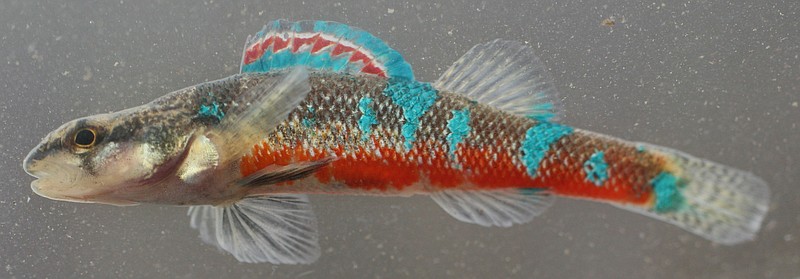The slender, bug-eyed trispot darter swims through area rivers, staying close to the edges of waterways, with its pale undersurface and scattered dark blotches on its fin rays. The fish is not found anywhere else and now it could soon get federal protection.
It lives in North Georgia, North Alabama and Southeast Tennessee. In Georgia, it is endangered. In Tennessee, it is threatened. In Alabama, it is listed as a Priority 2 Species of High Conservation Concern.
For 50 years, researchers in Alabama thought the fish was extinct before a biologist found three in St. Clair County in 2008. No one knows exactly how many remain, but the population is small, and it's shrinking, according to the International Union for Conservation of Nature and Natural Resources.
The trispot darter plays a vital part in the local food cycle, said Tierra Curry, of the Center for Biological Diversity. The center petitioned to try to protect the fish, which spawned the decision by the Fish and Wildlife Service to review its protection. The fish eats insects and helps control the local ecosystem and is then eaten by larger fish.
More Info
For information on how to submit a comment, click here.
"It's a beautiful little fish," Curry said. "It only occurs in that part of the world and nowhere else. It's gorgeous to look at, and darters play a role in the food web."
But the population is not doing well and may go extinct.
"They have a very specific life history strategy that makes them vulnerable to decline," said Brett Albanese, with Georgia Department of Natural Resources. "They have to migrate from large river habitats to tiny creeks for reproduction in the late winter and early spring. If those small stream habitats are blocked by a dam, farm pond or even a poorly designed culvert, they cannot reach their spawning sites."
The U.S. Fish and Wildlife Service is proposing to list the species as threatened under the Endangered Species Act, which is the final step before it is officially listed.
The protection would focus conservation efforts on the fish's behalf and would raise awareness to the threats of the fish, according to the announcement from the U.S. Fish and Wildlife Service. It would also further dictate what can and cannot happen near the waters it inhabits. The key to recovery for the trispot darter population is connectivity, Albanese said. That would allow fish to travel unhindered to and from mating locations.
The fish was first proposed to be federally protected in 2010, and in 2011 the Fish and Wildlife Service agreed it may warrant protection. However, because of a backlog of species being considered for protection, it took more than five years for things to move forward.
The protection process has now cleared most major hurdles and is on its final leg. Curry said the process is at a point where it should make it through to the end and receive federal protection.
When the fish was reviewed, the Fish and Wildlife Service had three choices. It could have ruled the fish was not warranted to receive protection, that it should go back on the waiting list or that it should continue on the process toward approval. Its October ruling kept the fish on the path toward federal protection.
"If they weren't going to put it on the [federally protected] list then they would have a 'not warranted' finding or put it on the waiting list," Curry said.
The public has until Monday, Dec. 4, to provide comment. It will take 10 months to finalize the decision.
Contact staff writer Mark Pace at mpace@timesfreepress.com or 423-757-6659. Follow him on Twitter @themarkpace and on Facebook at Chattanooga OutdoorsTFP.
